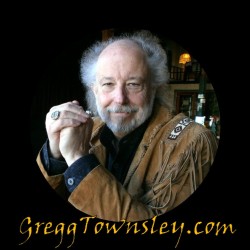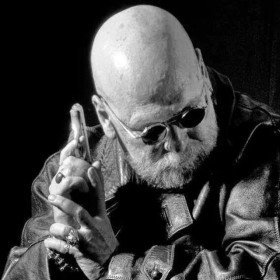-
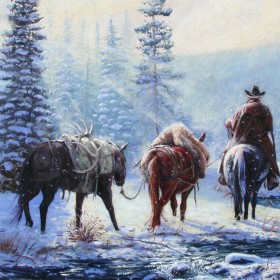
A Christmas invitation
There was no reason Ronin couldn’t find his way out of Carson City for the holidays. No physical constraint was keeping him. No emotional attachment either, though there was the annual expectation he’d attend services at the Indian school south of town. He’d been a part of the American Gospel Mission’s “Christmas supper and show,” as he put it, since 1877, when he first came to Nevada’s Eagle Valley, fresh out of employment with the Pinkerton National Detective Agency. A couple of missteps and they had severed their relationship with the handsome ex-preacher. He’d gotten involved with a Spiritualist client—the beautiful and shapely Madame Bovary, a pseudonym it turned out, taken from a French novel he never read. He didn’t know her real name. The work since—here a bad guy, there a bad guy, a few more bad guys and gals in-between—had been surprisingly enjoyable. He had nothing else to do. So when the mission called, via the usual holiday card and Christmas gift—a fruitcake, of all things, but it was better than a Bible he’d never pick up or let alone read—the gunfighter hesitated. He’d attempted to back away from the Presbyterian woman’s mission school a couple of years ago. Their relationship had changed—it needed to. He had no regrets, and she’d gotten married to a decent Mormon man who’d made a name for himself in eastern Nevada, when Ronin and an Ormsby County deputy hunted a short son of a bitch who’d killed a woman he’d loved in Virginia City, not that anyone knew of the relationship between Ronin and the ball-gazing twin, an eye-catching fortune teller also. He held an attraction to spiritually-minded women, though it bothered him to say so. He’d abandoned the rigid orthodoxy of the Episcopal Church in 1873—the year the Colt Peacemaker was made—leaving a log-bound Wichita church in the less capable hands of those who wanted it—a tired-eyed merchant, his ignorant wife, an angry town constable and a pack of pigeon-minded misfits and miscreants who couldn’t tell the holy story from their own, not that the church saw things that way. They figured he was simply finished. And he was, though he had some feelings about that. The thing with the women crept up on him, like suppressed desires often do. Read more…
-
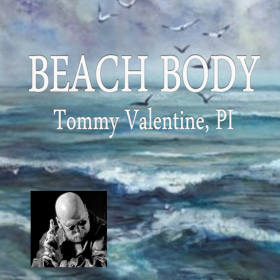
Tommy Valentine’s “Beach Body”
I gotta tell you, I’m excited about these new Tommy Valentine, PI, adventures–“Beach Body,” “Waimea Wiseguys,” “Monkey Punch” and Portland Weird.” There’s something about the Tommy and Babs characters that sets the muse moving. In this third story, the Penns Grove Private Investigators head back to Long Beach Island to investigate the curious death of a Barnegat Light man, washed up on the sand at Beach Haven. Our latest Kindle-only tale includes the usual on-location dining hints, a mad swipe at the Philly Mafia, and a humorous and fun description of liquor and life in West Jersey. “Waimea Wiseguys” is up next, and is expected to be available after our visit to Kauai in January. The remaining two will round out the first season of episodes in the Tommy Valentine series, and will be included in the first season’s anthology, tentatively entitled Monkey Business. You should see the book cover! The anthology will be available in paperback and Kindle versions sometime next spring. Here’s an excerpt of “Beach Body.” “She’s the computer of the house, and the brains between the two of us, because most of the time I’m simply the brawn, the fist in the gym bag so to speak, the mallet in the croquet kit, not that I play but you get the point…” The second in the series, “Jersey Tomato,” is available September 5. Read more…
-
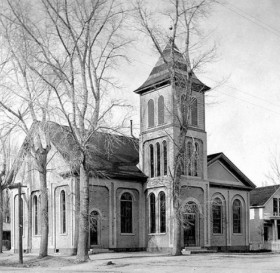
The Presbyterian church
The old door shook. It wasn’t his intent to harm anything. Fact is, the once-reverend W. W. Ronin wouldn’t think of making light of the buildings that had given him succor over the years—initially in Greensboro, Pennsylvania where he was in training, and later in Wichita, Kansas as the second rector of the St. John’s Episcopal Church, when it was still made out of logs and situated between the confluence of two sometimes over-flowing rivers. There was still something sacred about religious places, even if he didn’t embrace the faith they sometimes contained. The church wasn’t just about “the people,” as he used to say while preaching, one hand on the lectionary, the other searching for a Bible in the event his people asked an unexpected question or two over the meal that many times followed services. Church was the building, too, though he didn’t understand that at the time. He lifted his knee up to his chest and pushed again, the bottom of his foot—the ball, actually, not the heel as it dissipated too much force to use his boot that way—and the old wooden doors, crafted from pine planks harvested in the Sierra mountains, just up the Kings Canyon toll road he figured not that it mattered, splintered into pieces like the old man’s leg caught under the wheel of an errant coach from Benton’s Livery on Carson Street last week. The door swung back and forth, its lock shattered, shards of it rolling lifelessly across the entry way of the building, erected in 1861, before Nevada was even a state. Samuel Clemens (Mark Twain’s) brother, Orion and his wife Molly attended there, though Clemens was now dead, having died a year ago, about the same time he began to wonder if there was anything real at all to the Protestant convictions he once proffered as an Episcopal priest on the American frontier. He dumped the shorter of his two Colt handguns over the back of his holster, until it was level, and then slowly extended it forward into the midnight darkness of Nevada’s oldest sanctuary, as long as you didn’t count the Mormon meeting place in Genoa, or the Catholic church which was actually finished before the Presbyterians were, though the Calvinists had started earlier but ran out of money. Read more…
-
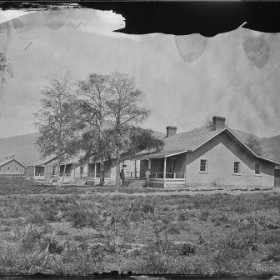
The hanging of Sam Mills
Twenty-eight year old Sam Mills wasn’t exactly pretty to look at. He had only one eye, one usable eye, anyway. A bar-room fight in the silver and lead mining town of Eureka in the mid-to-late seventies had seen to that. He was “a very bad character,” says retired Elko historian Howard Hickson. But his death was 138 years ago. And Mills was a minority in a time when Christian sentiments about race didn’t count for much — some say they don’t count for much nowadays either. My guess is, when an angry man threatens you in a lead-town bar, saying, “You black son of a bitch. I’ll teach you to think you’re as good as a white man” — words preserved by another Elko County historian, now long gone — you’re going to defend yourself. You may even end up in a Carson City prison, which of course, Sam Mills did. I mention Mills because he was the first African-American to be hanged in Nevada, and the first man of any color or distinction to be legally executed in Elko County. I was so fascinated by the tale when I first heard it that I made his story a big part of my story, in my book True Believer. The fourth in a series of Nevada-based Westerns, True Believer relates the early history of Elko, Lamoille and Wells while spinning an imaginary tale of murder, mayhem and unrequited love in the eastern shadow of the Ruby Mountains. Read it and you’ll meet real-life Elko resident Jim Clark, who owned the Depot Hotel on Commercial Street, in 1881. You’ll also visit Wells’ first permanent building and bar, the Bulls Head Saloon, made only of railroad ties. Read any of the W. W. Ronin Westerns — there are four in print, a fifth to be published by summer 2015 — and you’ll see Nevada in in a way you never thought you would or could. When Mills was executed in 1877, at the end of an Elko County rope, he was 24 years old. But he wasn’t put to death for his barroom brawl in Eureka. He was hung for accidently killing his best friend. Here’s the rest of the story. Sam Mills was making the best of his life, working as a cook at a hotel in Halleck Station, just outside of Elko. Read more…
-
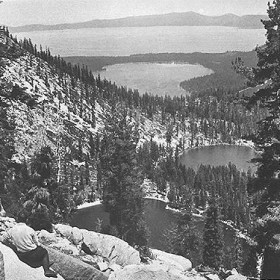
Lake Tahoe’s Water Babies
“What’s purple and lives at the bottom of the ocean?” “You tell me,” I said, from behind the wheel of a 15-passenger van filled with elementary school children, from our martial arts business in Hillsboro. “Moby Grape,” he replied, laughing in the way only a pre-teen youngster can. The sorry excuse for a joke—kids say the darnedest things, don’t they?—comes to mind whenever I think of “Water Babies,” the mythical creatures talked about by an earlier generation of Washoe Indians. Best that anyone can say, Washoe Water Babies tales predate the crazy corps of white Americans who crowded into northern Nevada when silver was first discovered in 1859. The story is a familiar one, if you’re at all acquainted with Nevada history. As the Comstock began to explode, the Washoe’s claim to the area began to implode. By 1863, most people say the tribe(s) were driven from their land, the forests from Virginia City and its environs all the way to Lake Tahoe were clear-cut, and traditional migration patterns—simply pictured, to Lake Tahoe in the summer for fishing, to the Pine Nut Mountains east of there for the fall harvest of nuts, and the valleys in-between so as to winter warmly into the spring—were made difficult, at best. The impact on the Washoe culture was terminal, so much so that by 1866, Indian agents in Reno believed the tribe faced imminent destruction and no government provision was made for the tribe’s future. Fast forward 150-some years. The Washoe have persevered. And despite significant challenges, which are beyond the scope of this simple blog entry—the Washoe people have formed tribal governments, regained control of (some) tribal lands and are busy, even to this day, actively building and teaching about their culture. In some small way, I hope my novels—set in northern Nevada, in the 1880s and forward—contribute to our understanding of this important community which, by some estimates, dates to more than 9,000 years ago. But I want to talk about Water Babies, because you’ll see them pop up, as it were, in some of my books. At the beginning of Lady of the Lake, for instance. “Did you see them?” the voice asked. Ronin looked left and right, but not before he placed his right hand on the black buffalo-horn handled Colt sitting cross-draw at his waist. “Jesus Christ,” he murmured. Read more…
-
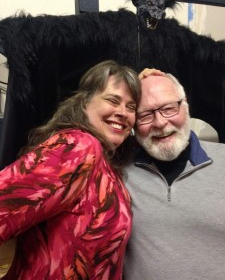
Authors fill house at Three Mugs Brewing Company in Hillsboro
Five local authors packed the house at the Three Mugs Brewing Company on Saturday, March 28, 2015. And a kindly patron / fan bought me a beer! The third in a series of author events begun by local publishing guru Jason Brick, the evening event competed with spring break plans for many in the greater Hillsboro area. But a good time, and a packed house, was enjoyed by all. A fourth event is being planned for this summer. (Photo attributions include: Bob McKee, Jessica Smith, Nancy Townsley and James Wakeman. Read more…
-
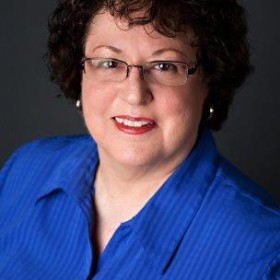
Our first interview, meet author Linda Pendleton
Meet author Linda Pendleton, author of more than a dozen fiction and nonfiction books, and the wife of the late action-adventure writer, Don Pendleton. Gregg: Linda, thanks for being the first of our interviews on The Writers Edge. You’re an accomplished artist and writer, and a businesswoman too, judging by what I see online. Your books, websites, your late husband’s books and the possibility of a few movies — can I ask you what motivates you to create? Is it the muse or the mortgage? Linda: I write because I love to write and have a desire to satisfy my creative drive. I enjoy the inspirational flow and passion I feel as my creativity is expressed on the written page, and I enjoy sharing it. I have been told that some of my readers have found my nonfiction writing to be not only inspirational, but healing and comforting. As a writer, that is always so nice to hear and it warms the heart. A writer has to be a business person as well as a writer. Writing is only part of the game. In the past, it was finding agents, publishers, and wasting a lot of time. I now self-publish, thanks to Amazon Kindle and Createspace. But I also have my husband’s body of work to manage, in addition to ours, and my own. So a writer’s work is not done when he or she writes “The End.” Gregg: I enjoyed your book, A Walk Through Grief: Crossing the Bridge Between Worlds. In it, you talk about your writing partnership with your late husband, Don Pendleton. His obituary in the Los Angeles Times noted that Don’s 38 Executioner novels had sold more than 25 million copies around the world. Wow! I know there was some back and forth between the two of you about women’s and men’s points of view. What’s the difference? Linda: Yes, Don was considered the “father of the action/adventure genre,” with his publication of his original The Executioner: Mack Bolan Series, beginning in 1969 with War Against the Mafia. In 1980, Don franchised the Mack Bolan characters to Harlequin and about 900 books have been written by other writers. Don’s original 37 Executioner novels were released in December as ebooks, for the first time, by Open Road Media. His Executioner books had female fans as well as male. Read more…
-
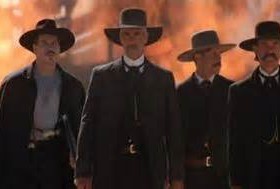
25 most popular Western movies
Asking people what their favorite Western movies are produces an interesting list, at best. I did that in February on my Facebook author’s page, and soon learned that if I wanted a statistical sampling I’d have to ask the question more carefully. Some folks responded with their favorite books. Others didn’t distinguish between multiple versions of the same story. Nearly everyone assumed that someone else’s mention of a film meant they didn’t need to mention it again. By way of reporting, 3104 people saw the post. A much smaller sample, 65 people, voted. Some folks voted multiple times. Three actors were mentioned by name—Errol Flynn, John Wayne (most often) and Clint Eastwood. The result was an enthusiastic list of “gotta see” films. Tombstone, with nine people reporting, and True Grit with eight, were the most popular. Here are the multiple winners: Tombstone (9), True Grit (8), Jeremiah Johnson (4), Lonesome Dove (4), Open Range (4), Searchers (4), Shane (4), 3:10 to Yuma (3), Blazing Saddles (3), Good, Bad and the Ugly (3), Monte Walsh (3), My Name is Nobody (3), Once Upon a Time in the West (3), Silverado (3), The Outlaw Josey Wales (3), The Shootist (3), Unforgiven (3), Winchester ’73 (3), Butch Cassidy & the Sundance Kid (2), Cat Ballou (2), Conagher (2), Hang ‘Em High (2), High Plains Drifter (2), Magnificent Seven (2), Pale Rider (2), Quigley Down Under (2) and The Man Who Shot Liberty Valence (2). Here are the single mentions: Big Jake, Broken Arrow, Broken Trail, Dances With Wolves, Dodge City, Duck You Sucker, Fistful of Dollars, Fort Apache, Heaven’s Gate, High Country, High Noon, Hombre, Judge Leroy Bean, McClintock, Pat Garrett and Billy the Kid, Paint Your Wagon, Red River, Red Sun, Return to Lonesome Dove, Rio Bravo, Rio Grande, Shanghai Noon, She Wore a Yellow Ribbon, Sons of Katie Elder, Stagecoach, Support Your Local Sheriff, The Cowboys, They Died With Their Boots On, Verz Cruz, Virginia City, War Wagon, Wild Bill, Wild Wild West, Wyatt Earp and Young Guns. Read more…
-
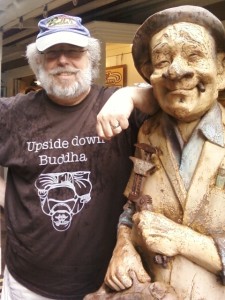
3 Ronin books and a detective novella in 2015
This will be a banner year for me. Two Bears Books will publish three more Westerns—Home Means Nevada, Bathhouse Row and The Mountain Is Easy. The publication of Home Means Nevada finishes the core books in the W. W. Ronin Western series, introducing the characters and establishing the history and time period. The first five books are written as an easy to read “third person” narrative, placed in 1880s Lake Tahoe, Reno, Virginia City and Carson City, Nevada. About book five: When Genoa farmer Orrin Hickman decides to resurrect the Mormon militia group the Danites to settle some long-standing accounts, an old curse threatens fire and floods on the people of northern Nevada. Ex-priest and Pinkerton Detective, W. W. Ronin finds his heart broken and his hands full and guns blazing as a returning husband complicates his personal life and prison-breaking felons join the “rising tide” of Latter Day Saint hit men in the fifth of the W. W. Ronin adventures, Home Means Nevada. Home Means Nevada defines place-based fiction, where real people and real places become the setting for hauntingly real human adventures. Home Means Nevada takes place in Carson City, Genoa and Gardnerville, Nevada, and tells the true story of what happens when religious dreams meet present-day realities among Nevada’s earliest settlers. A full-length piece of historical fiction, Home Means Nevada should be available in April. Bathhouse Row re-launches the W. W. Ronin epic. Written in a more active style, “darker and deadlier than ever,” my beta-readers say you’ll love Bathhouse Row! I’ve set the “first person” tale of murder and intrigue amidst four well-known northern Nevada hot springs—Steamboat, Carson, Genoa (Wally’s) and Markleeville (Grover’s). The book is out-of-sequence, moving the adventures to 1889, has all new historical content and will be available late summer. The Mountain Is Easy pretends to be a long lost W. W. Ronin journal, recently found under my bed, dating to 1901. Ronin, settled down at Lake Tahoe, having just turned fifty. Be prepared to find out what happened to some of the series’ regulars as Ronin considers retirement… You can download the first six chapters of The Mountain Is Easy by simply signing-up for this site’s newsletter. I’ll send it to you FREE, as a PDF file. You’ll be surprised to hear that I have a 21st century detective novella in the works, too. Read more…
